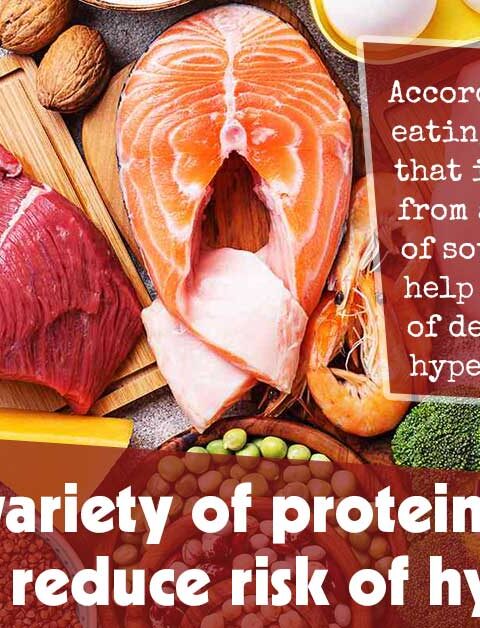American Heart Association released a statement noting several popular eating patterns as being high for heart health; some, however, contradict AHA dietary guidelines and were therefore not classified as being healthy options.
Recent years have witnessed an explosion of various eating patterns and social media misinformation that adds further confusion about heart-healthy diets.
Cardiometabolic health encompasses a range of factors that impact metabolic health and increase risk for cardiovascular and heart diseases, such as body weight, blood pressure, glucose, cholesterol and other lipids that impact metabolism and heart disease risk.
Though abnormal levels in any one factor could increase heart disease risk, abnormalities in multiple factors exponentially compound this risk and put patients at greater risk of more serious conditions.
This report ranks popular eating patterns according to how closely they follow the AHA Dietary Guidelines. These recommendations contain 10 essential features of an eating pattern designed to promote cardiometabolic health by restricting unhealthy fat consumption while decreasing carb intake.
Balanced carb intake improves both metabolic and cardiovascular health while mitigating any other potential health conditions caused by excessive carb consumption – especially sugar-sweetened drinks and processed carbs which have been associated with higher cardiovascular disease risks.
This statement analyzes how popular diet patterns match these characteristics, with recommendations tailored to be flexible with respect to individual budgets, cultural norms and personal tastes.
Review of several long-term diet plans was performed. Dietary patterns were organized based on similarities among key features, resulting in 10 groups:
DASH-style diet – represents a nutritional pattern which emphasizes fruit, veggies, legumes, whole grains, low-fat dairy, seeds and nuts, nontropical oils, lean poultry meats and fish as part of its core menu items. Other examples are Baltic and Nordic diets which follow similar dietary principles.
Mediterranean Diet – or, more accurately, its predecessor the Mediterranean Diet – restricts dairy intake; emphasizes fruits, veggies, legumes, whole grains, seeds & nuts, extra virgin olive oil & fatty fish consumption as well as moderate red wine intake; and includes moderation red wine consumption.
Vegetarian/Pescatarian style diet – an entirely plant-based eating pattern which includes fish.
Vegetarian/Ovo/Lacto style diet – plant-based eating plans which may or may not include dairy products (lacto-vegetarian), eggs (ovo-vegetarian), or both (lacto-ovo vegetarian).
Vegetarian/Vegan Diet is a plant-based eating pattern, free from animal products.
Low Fat Diet refers to any plan which restricts fat consumption to less than 30% of total calorie intake, such as the Therapeutic Lifestyle Change or Volumetrics plans.
Diets that restrict fat to less than 10% of total calorie consumption include those developed by Physicians Committee for Responsible Medicine, McDougal, Pritikin, Esselstyn and Ornish as well as vegan versions of such diets.
Low-carbohydrate diet – this approach limits carb consumption to between 30-40% of total calorie consumption and includes the Zone, South Beach and low GI diets. mes Paleolithic Diet (aka Paleo diet) excludes dairy legumes, whole and refined grains as well as oils from its daily food consumption regiment.
Very Low Carb/Ketogenic Diet (VLCKD) – Restricting carbs consumption to less than 10% of daily caloric intake, this diet includes the Well-Formulated Ketogenic Diet, Atkins Diet and Ketogenic Diets.
Each diet was evaluated against 9 of the 10 criteria used by the AHA as measures for creating a heart-healthy dietary pattern, leaving only “consuming to reach an appropriate energy balance for maintaining a healthy weight,” as this can depend on other aspects beyond dietary choices such as physical activity levels and is equally applicable across diet types.
Diets were given points according to how closely their characteristics aligned with AHA guidelines: 1 point was awarded for reaching all guidelines completely, 0.75 for reaching most, and 0.5 for reaching some.
If a factor of the diet did not meet AHA dietary guidelines in any way, no points were awarded for that component. Once totalled and revised, these scores were then assigned a rating between 0 and 100 with 100 being the closest match possible to AHA’s guidelines.
Diet patterns reviewed varied considerably in their alignment with AHA guidelines, producing scores between 31 and 100. The scores were divided into 4 levels that took into account diet factors that assisted with adhering to these recommendations as well as potential challenges to adherence.
One key dietary pattern guideline was “minimize consumption of beverages and foods containing added sugars”, while opportunities to improve its health benefits were identified as well.
Level 1: Highest-Rated Diet Plans Scoring Over 85
The four highest-rated diet plans scored 85 or above are adaptable and offer a wide variety of healthy food choices, with the DASH-style dietary pattern earning the perfect score by meeting all AHA guidelines. They contain less processed food, added sugars, salts tropical oils and alcohol while increasing consumption of fruits non starchy vegetables legumes whole grains
Protein can come from many different sources, including nuts, beans and legumes as well as seafood or fish, lean meats and poultry and fat-free or low-fat dairy products.
The Mediterranean-style diet also had an excellent rating. Although slightly lower than DASH in terms of added salt levels and moderate alcohol consumption instead of restricting or avoiding alcohol altogether. Many characteristics of vegetarian dietary patterns aligned with AHA dietary guidelines; vegetarian and pescatarian plans that included dairy products or eggs also earned high marks.
Dietary patterns from top-level research provide optimal compliance with AHA’s recommendations if implemented according to intention, yet can still be adjusted according to budget, preferences, and cultural practices so as to allow individuals to consistently adopt this approach in the long run.
Level 2 Diets Scoring 75 to 85
Low-fat and vegan diets scoring between 75 and 85 are diets which emphasize fruit, veggies, whole grains, nuts, and legumes while restricting alcohol and beverages as well as foods containing added sugars. Although restrictive vegan dietary patterns may make adherence harder when dining out or in the long run.
Adherence to a vegan diet could increase the risk of vitamin B-12 deficiency, potentially leading to red blood cell abnormalities that result in anemia; supplementation could therefore be recommended.
Low-fat diets tend to treat all fats equally, while AHA guidelines suggest substituting saturated fat with healthier sources such as poly and monounsaturates fats such as polyunsatured and monounsatured. Individuals following such a plan could ingest more unhealthy carb sources like refined grains and added sugars than necessary.
These factors could, however, be overcome through education and counseling for individuals interested in following such diets.
Level 3 Diets (55 to 74 points)
These diets align moderately to closely with AHA guidelines. One motivation for adhering to these diets may be research which suggests they could potentially reduce artery fat build-up.
Studies have revealed that eating healthily on a low-carbohydrate diet can influence cholesterol, blood sugar, blood pressure, and weight loss just as effectively as on a low-fat diet; both diets limit food groups emphasized by AHA guidelines.
Points were deducted for those eating diets low in fat that limit healthy plant oils and nuts, leading to deficiencies of proteins, essential fatty acids and vitamin B-12 that could result in muscle weakness or anemia.
Low-carb diets typically restrict fruits for their high levels of natural sugars, legumes and grains due to their limited carbohydrates. By restricting carbs intake, individuals may reduce fiber consumption while increasing saturated fat intake from meats and animal-sourced foods which contradict AHA guidelines.
This statement suggests that loosening restrictions on foods like whole grains, fruits, seeds and legumes could help individuals adhere to a reduced-carb dietary pattern while simultaneously supporting long-term heart health.
Level 4: Very low-carb/Ketogenic and Paleolithic Diets have scored less than 55
These diets, often employed for weight loss, do not align well with AHA dietary guidelines. Their strengths lie in emphasizing eating non-starchy veggies, nuts and fish while reducing added sugar and alcohol consumption; studies involving such diets have seen improvements in blood sugar and body weight results over periods of six months or more.
However, most improvements after one year were no different from those observed with less restrictive diets. Limitations on legumes, whole grains and fruit could result in lower fiber consumption while these diets tend to be high in fat without restricting saturated fat levels; both low fiber levels and increased levels of saturated fat have been linked with an increased risk of cardiovascular disease.
There’s no way anyone could adhere to Level 4 diets as intended and still meet the AHA Dietary Guidelines, because they are highly restrictive and difficult for most individuals to stick with long term. Although they might produce short-term weight loss benefits, such diets don’t allow people to maintain weight loss goals effectively – and in order to be sustainable.







